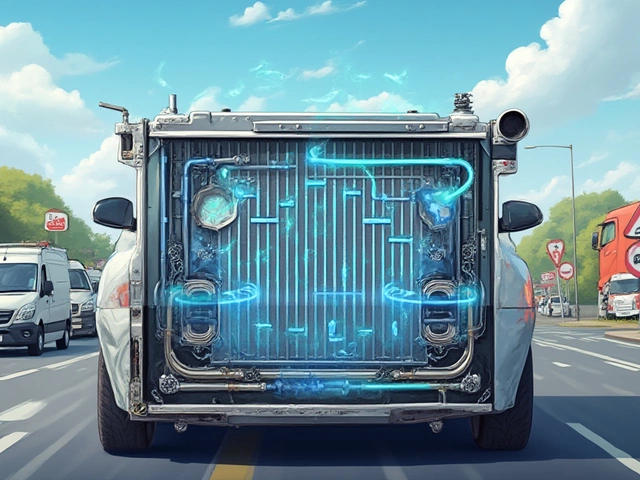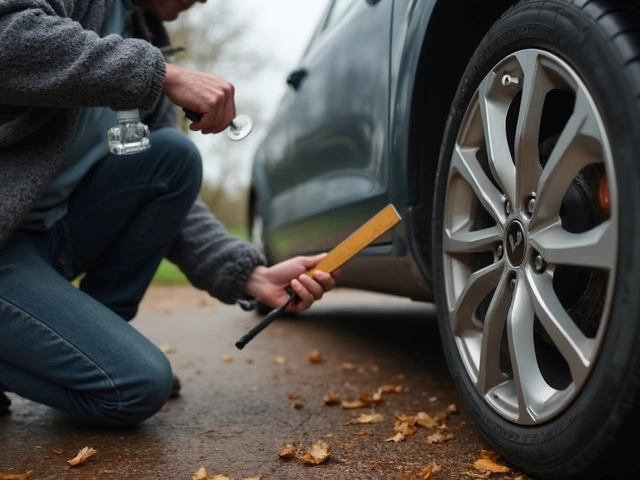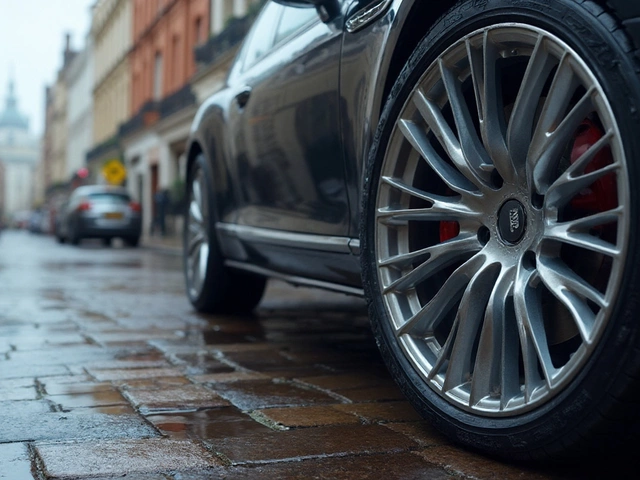Ever opened a box of brake pads and wondered, ‘Will these last me a year or a decade?’ Spoiler: there’s no magic number. Brake pad life isn’t just a miles game—driving style, city jams versus highway miles, and even the kind of car you have all play a part.
If you’re asking about five brake pads specifically, chances are, you came across a set with an extra one thrown in (or you’ve had one wear out at an odd time). Sounds weird, but it happens. Whether you have four or five pads, don’t get hung up on quantity. What matters is how quickly they wear down.
Here’s the deal—most daily drivers burn through pads somewhere between 30,000 and 70,000 miles, but some folks mash through them in half that time. Heavy city driving with lots of starts and stops? Your pads will vanish faster than your gas money on a road trip. Grind the brakes, ride them downhill, or haul around heavy loads, and you’ll be changing them sooner than your neighbor who mostly cruises the open road.
- The Real Role of Brake Pads
- What Actually Affects Brake Pad Lifespan?
- How Long Should You Expect Brake Pads to Last?
- How to Check If Your Pads Are on Their Last Leg
- Pro Tips to Extend the Life of Your Brake Pads
- When Replacing One, Four—or Five—Pads Makes Sense
The Real Role of Brake Pads
Brake pads are the unsung workhorses in your car’s braking system. When you press the brake pedal, you’re basically squeezing these pads against spinning metal discs—called rotors—to slow your wheels down. All that squeezing creates friction, and it’s that friction that brings your car to a stop. No pads, no stopping. Simple as that.
Each wheel usually has two brake pads, sitting on either side of the rotor. When the caliper (basically the clamp) pushes the pads onto the rotor, the car slows down. But every time this happens, a teeny bit of pad material wears away. That’s why brake pads don’t last forever and need regular checking.
It's not just about stopping, though. Good brake pads actually make your car safer by shortening stopping distances and keeping your rotors in good shape. Worn out pads do the opposite—they make stopping take longer and can even ruin your rotors, which cost a lot more to fix or replace.
Most modern cars use disc brakes at least on the front wheels, and many use them all around. Here’s a quick look at what makes up a basic disc brake system:
- Brake pad: squeezes the rotor to slow the wheel
- Rotor: the disc that spins with your wheel
- Caliper: clamps the pad onto the rotor
- Brake fluid: pushes the caliper when you hit the pedal
| Driving Condition | Typical Lifespan (miles) |
|---|---|
| Highway Driving | 60,000–70,000 |
| Mixed/Normal Driving | 30,000–50,000 |
| City Stop-and-Go | 20,000–30,000 |
So, understanding the brake pads in your car isn’t just for gearheads or mechanics. Even if you’re not into cars, knowing what they do and how fast they wear can save you a headache—and quite a bit of cash—down the road.
What Actually Affects Brake Pad Lifespan?
You’d think brake pads have a set lifespan, but that’s wishful thinking. There’s a whole list of gritty things that chew through your brake pads faster than you’d expect. It’s not just about how far you drive, either. Let’s break down what really matters.
- Driving Habits: If you slap the brakes hard at every stoplight or tailgate like it’s your job, your pads won’t last. Gentle braking gives you the biggest mileage.
- Type of Driving: City driving, with start-and-stop traffic, eats up pads way quicker than highway commutes. Fast braking in traffic means more friction—and that’s what wears pads out.
- Car Weight & Load: Carrying lots of passengers, towing trailers, or owning a big SUV? More weight means more energy to stop, so your pads get tired faster.
- Brake Pad Material: Not all pads are built equal. Organic pads are quiet but wear out the quickest. Ceramic ones can last longer and are less noisy, but they cost more. Semi-metallic pads find a compromise in the middle—good stopping power but a bit noisier and dustier.
- Rotors & Calipers Condition: Warped rotors or sticky calipers make pads rub even when you’re not braking. That’s wasted pad, mile after mile.
- Climate and Environment: If you’re driving in the mountains or in really hot or wet areas, your pads will take more of a beating than if you’re always on flat and mild roads.
Some real-world numbers help put it in perspective. Here’s a quick look at how different factors can hit your brake pads’ lifespan:
| Factor | Typical Brake Pad Lifespan (Miles) |
|---|---|
| Highway driving, light load | 60,000 - 80,000 |
| City driving, heavy load | 25,000 - 40,000 |
| Aggressive driving habits | 15,000 - 30,000 |
| Gentle driving, regular maintenance | 70,000+ |
The biggest takeaway? Stay off the pedals if you want your pads—and your wallet—to last longer. Use smoother stops, avoid crowding your trunk with heavy gear, and get your rotors checked when you notice a weird pulsing or noise. These habits actually make a difference you can see, mile after mile.
How Long Should You Expect Brake Pads to Last?
Here’s the real talk: there’s a pretty wide range when it comes to how long brake pads stick around. Most drivers see anywhere from 30,000 to 70,000 miles on a set, but the truth is, your number might land under or over this range depending on a few big factors.
Your car’s make and model set the baseline. For example, budget compact cars often have pads that wear down slower than those on full-size SUVs or trucks, just because they don’t have as much weight and stopping force to deal with. If you’re driving something sporty or heavy, your pads will likely clock out a lot sooner.
Driving habits might matter more than anything else. Are you slamming on brakes at every red light, riding them going down hills, or pulling a trailer? Pads in these scenarios might not even hit 20,000 miles. On the flip side, if you stick to highways where you’re not stopping and starting every second, you could see numbers creeping over 70,000 miles, no joke.
No two brands are the same either. Some ceramic brake pads cost more upfront but tend to last longer and stay quieter, while basic organic ones wear out faster, especially if you drive hard in traffic. Here’s a quick look at typical brake pad life by material and usage:
| Pad Material | Average Lifespan (Miles) | Best For |
|---|---|---|
| Ceramic | 40,000 - 80,000 | Everyday, light city & highway |
| Semi-metallic | 30,000 - 50,000 | Performance, heavy loads |
| Organic | 20,000 - 40,000 | Light cars, light usage |
It’s not just about mileage. Weather matters. Lots of rain, salty winter roads, and even extra dust on city streets can eat through brake pads faster. Spend a lot of time in stop-and-go traffic? That’s not friendly for pad life either.
So how do you make sense of all this? Instead of watching the odometer only, pay attention to the signs your pads give you—strange noises, a shaky pedal, longer stopping distances. Whatever the case, regular check-ups are key. Catching worn pads before they shred your rotors will save you money and stress. And remember, no matter your setup, brake pads aren’t a set-it-and-forget-it thing—keep them on your radar, always.

How to Check If Your Pads Are on Their Last Leg
Not sure if your brake pads are toast? You don’t need a shop to figure it out—you just need a flashlight, a peek through your wheel spokes, and maybe a quick listen next time you brake. Here’s what to watch for if you want to stay safe and keep your wallet happy.
First off, check the thickness of your brake pads. Look through the wheel and spot the pad pressed against the rotor (the metal disc). Most new pads are about 10–12 mm thick. Once they’re close to 3 mm, you’re running on fumes and risk damaging your rotors (which means bigger bills).
- Brake pads that look thin—less than a quarter inch—should be replaced ASAP.
- Hear a squealing noise when you press the brakes? That’s not your imagination. Most brake pads have a little metal wear indicator that squeals when the pad gets low.
- If braking feels soft, squishy, or you notice a grinding noise, things are already bad. Grinding is usually metal-on-metal and means both pads and rotors might need replacing.
Here's a quick cheat sheet of what to look, listen, and feel for:
| Sign | What It Means | Action |
|---|---|---|
| Pad thickness < 3 mm | Pads near done | Replace pads soon |
| Squealing noise | Wear indicator warning | Shop for new pads |
| Soft or longer stopping | Possible pad wear | Inspect immediately |
| Grinding sound | Pads totally worn out | Replace pads and probably rotors |
Another easy move: check your dashboard. Many newer cars have a brake warning light that pops on when the system senses the pads are shot.
Bottom line? Don’t wait for a disaster. Glance at those pads every oil change. If you spot any of these warnings, get them swapped before the real damage starts piling up.
Pro Tips to Extend the Life of Your Brake Pads
Most folks don’t think much about their brake pads until they start squealing, but with a few easy habits, you’ll get more miles before your next replacement bill. Here’s how to stretch their lifespan without risking your safety or emptying your wallet.
- Go easy on the pedal: Slamming on the brakes burns through pads fast—smooth stops are your friend. If you see traffic slowing up ahead, coast and press gently. That quick reaction might save you hundreds over the years.
- Lighten your load: The heavier your car, the harder your brakes work. Clean out that trunk. Even a hundred pounds of extra stuff in the back seat can make a difference over time.
- Use engine braking when you can: Downshift on hills or let off the gas early instead of depending only on the brakes. Less friction means less pad wear.
- Keep those wheels clean: Road grime and dust can build up on your pads, causing faster wear. A quick hose down every couple weeks can help more than you think.
- Get your rotors checked during pad swaps: Warped or rough rotors can chew through new pads in no time. Have your mechanic resurface them if needed.
Here’s a quick look at how these tips add up when it comes to pad lifespan:
| Driving Habit | Estimated Brake Pad Lifespan (Miles) |
|---|---|
| Heavy city, hard stops | 20,000–30,000 |
| Mixed driving, easy braking | 45,000–60,000 |
| Mostly highway, gentle driving | 70,000+ |
Regular checks help too. Pop off the wheels when you rotate your tires—catching thin pads early can save your rotors, and that’s a much bigger bill if you ignore it. And if your car feels shaky or makes weird sounds when stopping, get it looked at. Ignoring problems is the fastest way to kill good pads.
When Replacing One, Four—or Five—Pads Makes Sense
Most cars use four brake pads—two for each front wheel, since those do the bulk of stopping. But every so often, you’ll see sets with an extra pad, or you’ll lose one early thanks to a sticky caliper or uneven wear. The big question: should you swap just one, all four, or that weird fifth pad?
Here’s the rule of thumb: always try to replace pads on both wheels of the same axle together. This helps keep braking balanced and safe. Replacing only one pad puts you at risk for uneven braking, which can get sketchy fast, especially in wet conditions.
If you’ve got an oddly worn pad (just one gone and the rest look okay), it’s usually a sign of a mechanical problem—maybe a stuck caliper or a rotor that’s out of shape. Tackle that issue before just throwing in a new pad.
If you come across a five-pad set, don’t overthink it. Most modern disc brake setups still only use four pads per axle. Some manufacturers send a bonus pad or an extra in case you lose one, but it doesn’t mean your car suddenly needs five at once.
Here’s a quick look at when to swap:
- Replace all four pads if most are close to worn out. This is the way to go for brake pads longevity and safety.
- Replace just two (both on the same axle) only if the other two are still in great shape—like nearly new, which is rare unless you just replaced them.
- Swap a single pad only in an emergency and plan to get the rest done soon. This isn’t a fix for the long haul.
Cost-wise, replacing all four at once will save you on labor and possible rotor issues down the line. Labor is often the priciest part of the job, not the pads themselves.
| Number of Pads Replaced | When It Makes Sense | Average Cost (USD) |
|---|---|---|
| 1 | Temporary fix only; emergency use | $80–$150 (but not advisable) |
| 2 | Replacing both on one axle with little wear on the other axle | $150–$250 |
| 4 | Best for even, safe braking; recommended by most shops | $250–$400 |
| 5 | Only if you have a unique setup or received an extra as a spare | Varies (rarely needed) |
Bottom line: stick with pairs or all four. That fifth pad is just an insurance policy, not something you need to put on the car—unless you’re driving something really unusual. And if you find your brake pads wear unevenly, get that checked before tossing in new ones. Spending a little extra up front beats a scary moment in traffic every time.






